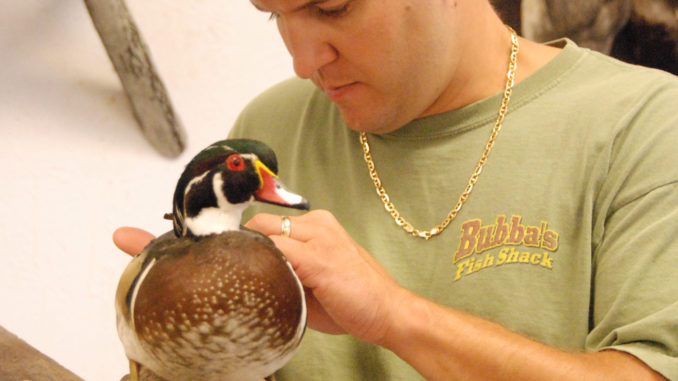
For its widespread abundance across North Carolina, many waterfowl hunters still relish the thought of commemorating a wood duck hunt by having one of the brightly colored drakes mounted.
Waterfowl are one of the most-demanding species for taxidermists to perfect. Often, it’s not the skill of the taxidermist, but the care taken of the specimen after the hunt, that will determine the quality of the mount. Here’s some “tax tips” for waterfowlers to insure they get a good jump on a good mount:
• Look the bird over for massive wounds. A taxidermist can’t replace missing hide or feathers, and not all birds are good candidates for mounting.
• Young birds or late-molting birds may still have pin feathers in their coats. Pin feathers are hard to mount and will eventually fall out, leaving gaps.
• Don’t put a bird you intend to mount on a lanyard or hold it by the neck. Carry the bird by its feet or in a pouch until the hunt is over.
• Don’t gut or field dress any bird you intend to mount.
• Never wrap a bird in newspaper. This age-old misconception dries the bird out and makes it susceptible to freezer burn. Taxidermists will wash any blood-stained feathers before mounting the skin.
• Store a bird to be mounted in a double-seal zip-lock bag and squeeze as much air out as possible.
• Get your bird to a taxidermist as quickly as possible in order to properly store the bird before mounting.
Editor’s note: This article is part of the On Beaver Pond feature in the November issue of North Carolina Sportsman. Digital editions can be downloaded right to your computer or smartphone.




Be the first to comment